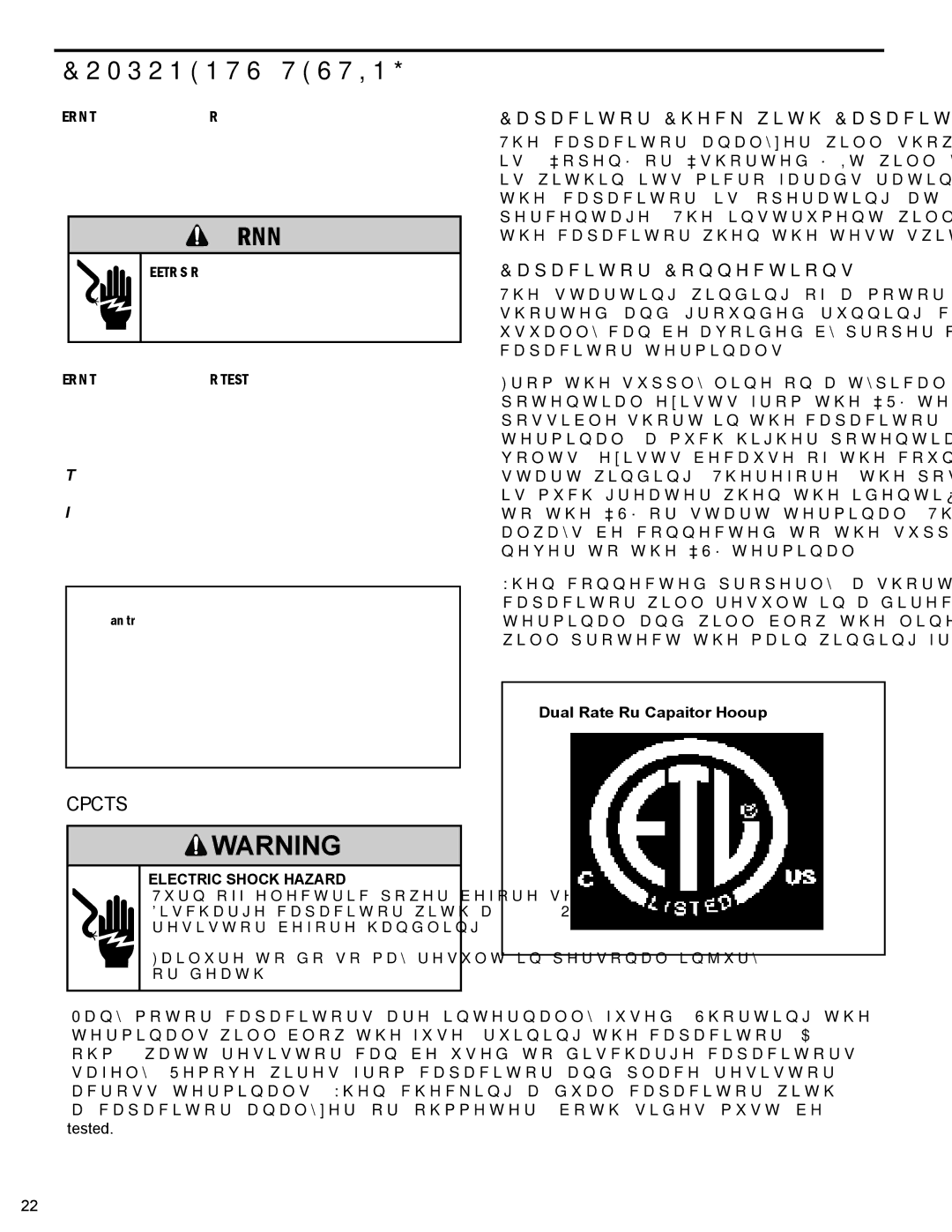
COMPONENTS TESTING
BLOWER / FAN MOTOR
A single phase permanent split capacitor motor is used to drive the evaporator blower and condenser fan. A
![]() WARNING
WARNING
ELECTRIC SHOCK HAZARD
Disconnect power to the unit before servicing. Failure to follow this warning could result in serious injury or death.
BLOWER / FAN MOTOR TEST
1.Do a visual inspection of motor’s wiring, housing etc. Determine that the capacitor is serviceable.
2.Make sure the motor has cooled down.
3.Disconnect the fan motor wires from the control board.
4.Test for continuity between the windings also, test to ground.
5.If any winding is open or grounded replace the motor.
6.A “live” test can also be performed by using a live test probe (see appropriate wiring schematic).
Fan Motor
CAPACITORS
![]() WARNING
WARNING
ELECTRIC SHOCK HAZARD
Turn off electric power before servicing. Discharge capacitor with a 20,000 Ohm 2 Watt resistor before handling.
Failure to do so may result in personal injury, or death.
Many motor capacitors are internally fused. Shorting the terminals will blow the fuse, ruining the capacitor. A 20,000 ohm 2 watt resistor can be used to discharge capacitors safely. Remove wires from capacitor and place resistor across terminals. When checking a dual capacitor with a capacitor analyzer or ohmmeter, both sides must be tested.
Capacitor Check with Capacitor Analyzer
The capacitor analyzer will show whether the capacitor is “open” or “shorted.” It will tell whether the capacitor is within its micro farads rating and it will show whether the capacitor is operating at the proper
Capacitor Connections
The starting winding of a motor can be damaged by a shorted and grounded running capacitor. This damage usually can be avoided by proper connection of the running capacitor terminals.
From the supply line on a typical 230 volt circuit, a 115 volt potential exists from the “R” terminal to ground through a possible short in the capacitor. However, from the “S” or start terminal, a much higher potential, possibly as high as 400 volts, exists because of the counter EMF generated in the start winding. Therefore, the possibility of capacitor failure is much greater when the identified terminal is connected to the “S” or start terminal. The identified terminal should always be connected to the supply line, or “R” terminal, never to the “S” terminal.
When connected properly, a shorted or grounded running capacitor will result in a direct short to ground from the “R” terminal and will blow the line fuse. The motor protector will protect the main winding from excessive temperature.
Dual Rated Run Capacitor
22
